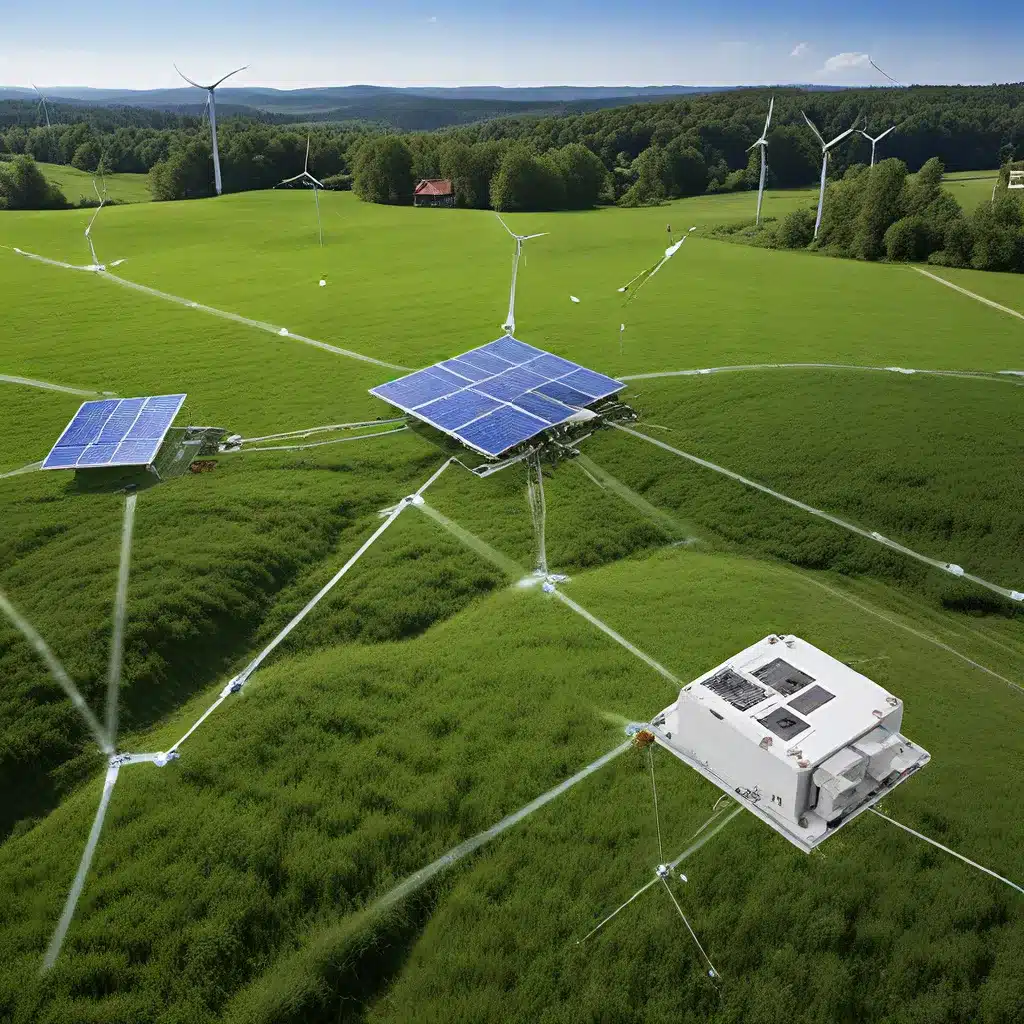
The Evolving Landscape of Sensor Networks and IoT
In the rapidly advancing world of sensor networks and the Internet of Things (IoT), the challenge of powering these distributed systems has become increasingly crucial. As sensor-driven technologies permeate our daily lives, from smart homes to industrial automation, the need for reliable, sustainable, and self-powering solutions has become paramount. Energy harvesting techniques have emerged as a promising solution to this challenge, offering a path towards self-powered and environmentally-friendly sensor networks.
At the heart of this transformation is the recognition that traditional battery-powered sensor nodes face significant limitations. Batteries require periodic replacement, introducing maintenance costs and environmental concerns. Moreover, in remote or hard-to-access locations, the logistics of replacing batteries can be impractical or even infeasible. Energy harvesting technologies, on the other hand, have the potential to harness ambient energy sources, such as solar, thermal, vibration, or radio frequency (RF) energy, and convert them into usable electricity to power sensor nodes.
Harnessing Ambient Energy: The Foundations of Energy Harvesting
The fundamental premise of energy harvesting is the ability to convert various forms of ambient energy into electrical energy that can be used to power sensor nodes, embedded systems, and other low-power electronic devices. This approach not only addresses the limitations of traditional battery-powered systems but also aligns with the growing emphasis on sustainable and eco-friendly technologies.
Recent advancements in energy harvesting technologies have led to the development of a diverse array of techniques, each with its own advantages and challenges. Solar energy harvesting, for instance, leverages photovoltaic cells to convert sunlight into electrical energy, making it a popular choice for outdoor applications where sunlight is readily available. Thermoelectric energy harvesting, on the other hand, utilizes temperature gradients to generate electricity, making it suitable for applications where heat sources are present, such as industrial machinery or vehicle exhaust systems.
Piezoelectric energy harvesting taps into the ability of certain materials to generate an electrical charge when subjected to mechanical stress or vibrations, making it a viable option for powering sensor nodes in environments with ambient vibrations, such as bridges or machinery. Electromagnetic induction, a principle underlying RF energy harvesting, can be used to capture and convert electromagnetic waves into usable electrical energy, enabling the powering of sensor nodes in areas with a strong RF presence, like cellular base stations or Wi-Fi access points.
Optimizing Energy Harvesting Efficiency
The success of energy harvesting-powered sensor networks lies in maximizing the efficiency of energy conversion and storage. Power management and energy storage systems play a crucial role in this optimization process. Power management circuits are responsible for conditioning the harvested energy, ensuring it is suitable for powering the sensor nodes and associated electronics. Energy storage devices, such as rechargeable batteries or supercapacitors**, can store the harvested energy for later use, providing a buffer against fluctuations in ambient energy availability.
Researchers have explored various strategies to enhance the efficiency of energy harvesting systems, including the development of adaptive power management algorithms and energy-aware sensor node designs. These advancements aim to strike a balance between energy harvesting, storage, and consumption, ensuring that sensor nodes can operate continuously and reliably, even in environments with variable or intermittent ambient energy sources.
Sensor Network Topologies and IoT Applications
The integration of energy harvesting techniques with sensor networks has opened up a world of IoT applications that were previously limited by the constraints of battery-powered systems. Mesh networks, for instance, can leverage energy-harvesting sensor nodes to create a robust and self-sustaining infrastructure, where individual nodes can relay data and share energy, enhancing the overall resilience of the network.
In industrial settings, energy-harvesting sensor networks can enable condition monitoring and predictive maintenance for machinery, optimizing operational efficiency and reducing downtime. Similarly, in smart city and environmental monitoring applications, self-powered sensor nodes can be deployed in remote locations, providing valuable data on air quality, water levels, or wildlife behavior without the need for frequent battery replacements.
Building automation is another domain where energy harvesting-enabled sensor networks have made significant strides. Wireless building automation systems can leverage energy-harvesting technologies to monitor and control various aspects of a building’s operations, such as HVAC, lighting, and security, without the need for wired power infrastructure.
Addressing the Security Challenges of IoT
As sensor networks and IoT technologies become more prevalent, the issue of security has emerged as a critical concern. The distributed nature of these systems, coupled with the resource constraints of sensor nodes, presents unique challenges in maintaining robust security measures. Cryptographic techniques, secure communication protocols, and intrusion detection systems have all been explored to mitigate the security risks associated with IoT deployments.
Energy harvesting-powered sensor networks introduce an additional layer of complexity, as the variability in energy availability can impact the overall security posture. Adaptive security strategies, which dynamically adjust security measures based on the available energy, have been proposed to address this challenge. By striking a balance between security requirements and energy consumption, these approaches aim to ensure the resilience of IoT systems while leveraging the benefits of self-powering sensor networks.
The Road Ahead: Future Trends and Considerations
As the sensor network and IoT landscape continues to evolve, the role of energy harvesting technologies is poised to become even more crucial. The pursuit of sustainable, self-powering solutions is not only an environmental imperative but also a strategic advantage in the ever-expanding world of connected devices and smart systems.
Future developments in this field may include advancements in hybrid energy harvesting systems, which combine multiple energy sources to provide a more reliable and consistent power supply. Additionally, the integration of machine learning and artificial intelligence techniques with energy harvesting-powered sensor networks could lead to predictive and adaptive energy management strategies, further optimizing the efficiency and reliability of these systems.
As we navigate the sensor network and IoT landscape, the https://sensor-networks.org/ website serves as a valuable resource for professionals, researchers, and enthusiasts alike, offering insights, case studies, and the latest developments in this rapidly evolving field.